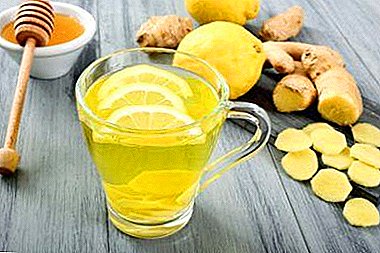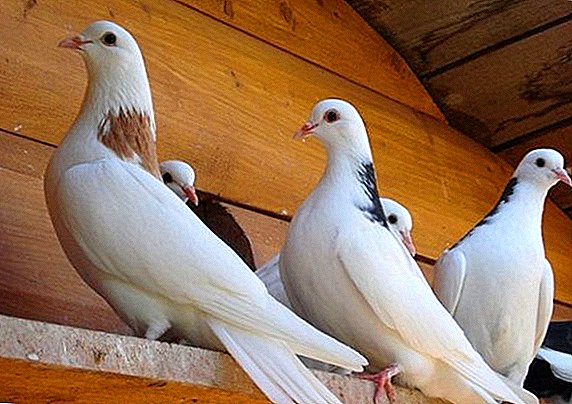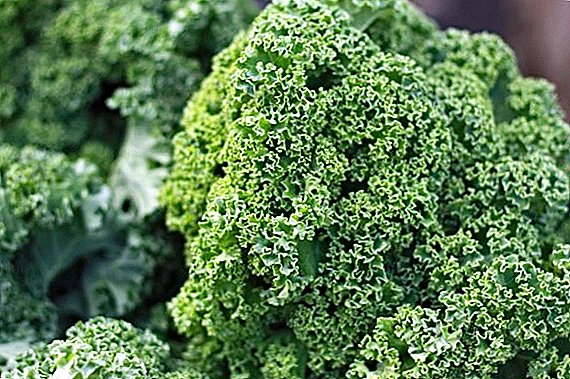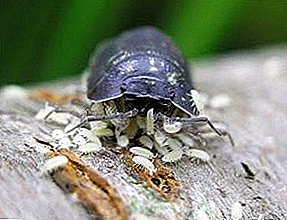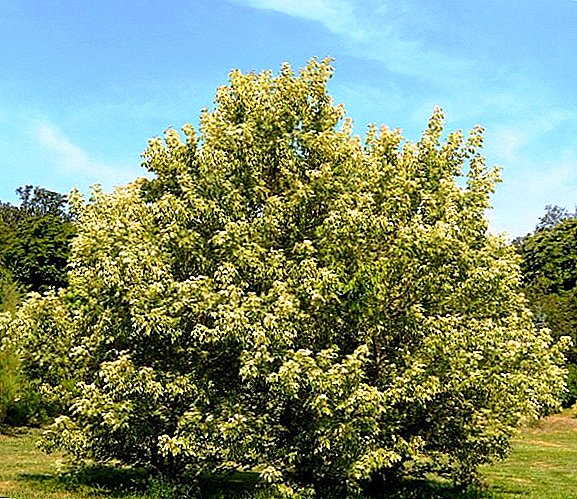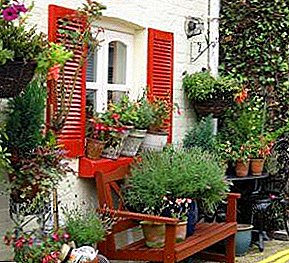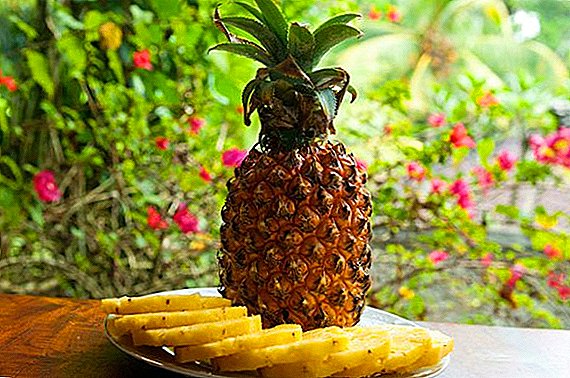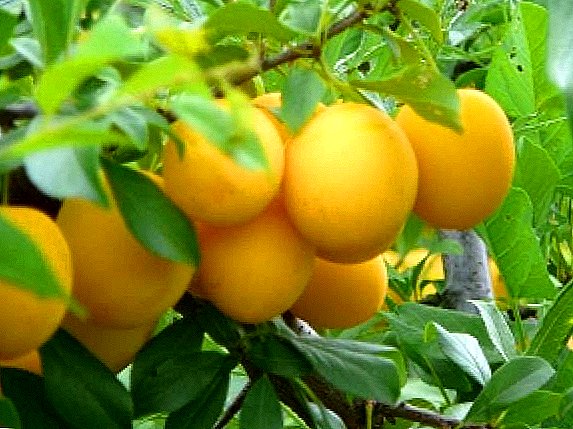
Beautiful tasty and juicy apples that can be used fresh or processed, and apples that give high yields and do not require increased care - the dream of any gardener.
All these requirements are met by the Prima variety, the description and photo of which is in our article.
What kind is it?
Prima - early autumn cultivar of appleswide common in southern Russia. The fruits ripen in the second half of August or early September. With a deficit of moisture, fruits begin to fall off a little before maturity.
Pollination
To get a good harvest Prime needs a pollinator - there must be other apple trees nearby. Best of all, they have recommended themselves as pollinators of this variety:
- Alenushkino;
- Delicious;
- Priam;
- Welsey.
Fruit storage
The collected fruits must first be sorted.. Suitable for storage of apples that do not have damage and preserve the stem. The quality of Primo is average. In a normal room, apples are stored for about a month. When placed in a refrigerator or in a dry cool cellar, the shelf life is extended to 2.5-3 months. Optimum storage temperature + 2 degrees.
Storage containers Prima can be any, the basic requirements - cleanliness and durability.
Description of Prima
We offer you a photo and description of the Prima apple tree.
Distinguish Accept from other apple trees on the site is not difficult.
She is tallwith a dense round or reverse pyramidal crown.
The branches of young trees are covered with brown bark. They move upwards at a sharp angle, but under the weight of ripening fruits can descend almost horizontally. The upper branches on young trees are also directed upwards and form an acute angle with the trunk, but over time they descend, overgrown with twigs.
The leaves are small, with a slightly pubescent bottom and a shiny top, oval and oblong-oval in shape. The petioles are short, forming a sharp angle with the branches. Buds pale red.
Apple tree blooms with light pink flowers, the pistils of which are below or on the same level with the stamens. Flowers in size - medium in shape resemble saucer.
A photo



After pollination in place of flowers, fruits begin to form. Apples Prima located on all types of fruit wood:
- kolchatka;
- spurs;
- fruit twigs;
- one-year increment.

The fruits are distinguished by:
- smooth greenish-yellow skin, with a large red blush covering almost the entire fruit;
- round, often asymmetrical shape;
- the average size;
- light creamy sour-sweet pulp.
The weight of one apple is 150-190 g.
The stem of a Prima is usually short, slightly protruding beyond the funnel.
Breeding history
Prima was withdrawn to the United States in the 50s. last century. The basis for the creation of the variety was a clone of a wild apple that was immune to scab and leaf spot.
These plants were crossed with cultivated trees to obtain good taste and controlled the scab resistance of each generation of hybrids.. The apple tree variety Prima is the fourth generation that has emerged as a result of crosses. To create a new apple variety were used:
- M. floribunda 821;
- Welsey;
- Melba;
- Rum beauty;
- Golden Delicious;
- their derivatives.
Herself Prima became the basis for the creation of apple trees Kuban Cossack, Memory of Esaul, Memory of Sergeev.
Spread
 The foreign guest got accustomed well on the territory of Russia - the variety is actively cultivated in all southern regions.
The foreign guest got accustomed well on the territory of Russia - the variety is actively cultivated in all southern regions.
In the wild, Prima does not grow - apple cultivar is extremely far from its ancestors freely growing in nature.
The variety does not have sufficient winter hardiness to grow in the conditions of Polesia, but its average frost resistance allows successfully cultivating an apple tree in the Forest-Steppe and Steppe.
Yield
Planted in suitable climatic conditions, the plants quickly take root and bear fruit once a year. The fruits ripen in late summer. The first single Prima apples can ripen in the second year after planting, but good fruit tree begins at 3-4 year. By the sixth year from one tree can collect up to 40 kg. apples, from ten years old - up to 120 kg.
Planting and care
In order to get an excellent harvest of apples in a few years, Prima saplings are planted in open ground in spring before the leaves bloom or in autumn, after they fall.
For planting apple is necessary:
- prepare a hole of sufficient size (the roots should be covered completely, and the site of vaccination, which is about 10 cm above the root collar, is free from the ground);
- thoroughly water the ground in the pit;
- lower the seedling and, keeping it in a strictly upright position, cover the roots with earth;
- drive a stake to the right of the hole and tie a tree with a soft rope;
- Pour 3-4 buckets of water under the seedling;
- To ram the land under a young apple tree (dung, peat, sawdust, straw) will do.
 The distance between the apple trees growing on the site should be more than 4 metersotherwise the crowns of the grown trees will interfere with each other.
The distance between the apple trees growing on the site should be more than 4 metersotherwise the crowns of the grown trees will interfere with each other.
In early spring, before the start of sap flow, young trees should be pruned to properly form the crown.
Leave on the tree is worth 3-4 strongest. Not intersecting escape. The remaining branches are better to delete. In a year, it will be necessary to cut off the shoots left, but to do so unevenly, leaving branches of different lengths.
Throughout their lives, apple trees need annual pruning.. This increases the yield and improves the appearance of the tree. Trees older than 7 years old are best cut only in the spring - the wounds on the bark heal faster.
The peculiarity of Prima is a large annual increase in plant mass, so the tree must be cut annually. Competent pruning, in addition to increasing yields, reduces the frequency and fruiting of this variety.
In addition to the formation of the crown Prima needs fertilizer. In the first year, you do not need to feed a young tree, but after two years you need to fertilize the apple tree. In order for the tree to have enough nutrients, it is necessary to apply fertilizer with irrigation:
- phosphate;
- nitrogenous;
- potash.
After five years, humate and urea are added to this list.
Diseases and pests
 Strong, regularly fertilized trees need regular pest and disease control measures.
Strong, regularly fertilized trees need regular pest and disease control measures.
A feature of Prima is resistance to most fungal lesions in the form of scab.
But due to poor resistance to frost and growth mainly in warm regions, the variety is susceptible to powdery mildew. To combat disease, but susceptible to powdery mildew.
The onset of the disease is manifested by a whitish bloom on the leaves and fruits. When developing, the disease leads to yield loss, infection of other trees and decrease in their winter hardiness. Powdery mildew control includes:
- triple prophylactic treatment with Bordeaux mixture or fungicides;
- fertilizing plants with phosphate or potash fertilizers;
- treatment of infected plants with a solution of potassium permanganate, copper chlorine or special preparations with an interval of 4-5 days;
- 3-4 times during the summer period it is possible to treat plants with Topaz or Skor;
- Cutting of infected branches and shoots in early spring before the beginning of sap flow.
As a result of powdery mildew, fruit rot can appear on Prima fruit. To prevent the disease, it is necessary to immediately destroy the detected diseased fruits.
Prima can also have apple cancer. The disease is manifested by deep cracks in the bark, damage to woody tissue and the gradual extinction of the branches. Strongly started cancer can lead to the death of the plant.
Prima may be affected by the same pests as other apple varieties.:
- apple flower eater;
- moth;
- sucker;
- apple moth, etc.
When pests infect trees, it is necessary to treat them with pesticides.. The substance and processing tactics are selected depending on the type of pest.
To prevent infection, you must regularly:

- pruning;
- fertilizer;
- watering;
- soil cultivation;
- whitewashing trunks to a height of 1-1.5 meters in early spring and late autumn.
The benefits of preventive measures are to grow strong plants that can resist diseases and parasites.
Prima - high-yielding apple variety. The main advantage of the variety is the high consumer properties of the fruit. Resistance to scab can significantly simplify the care of plants, avoid repeated treatment with chemicals and makes the apple tree a welcome guest of any garden.


